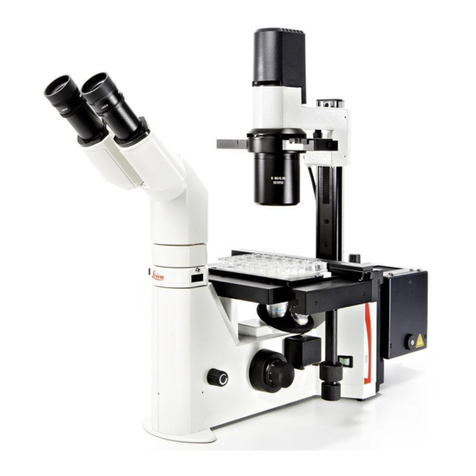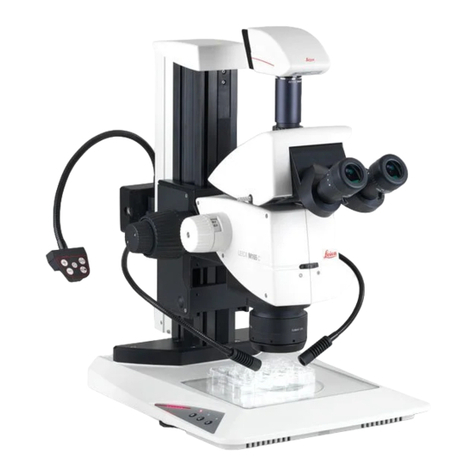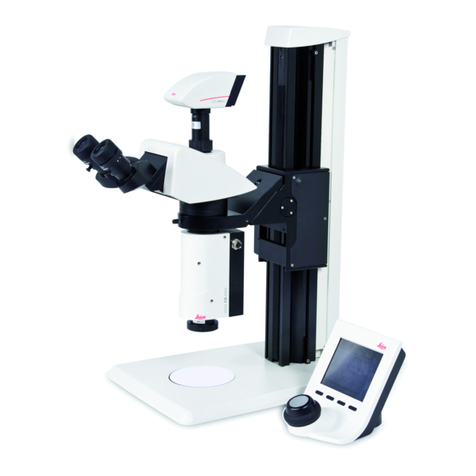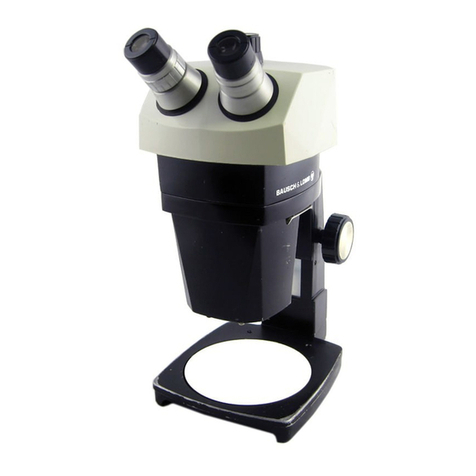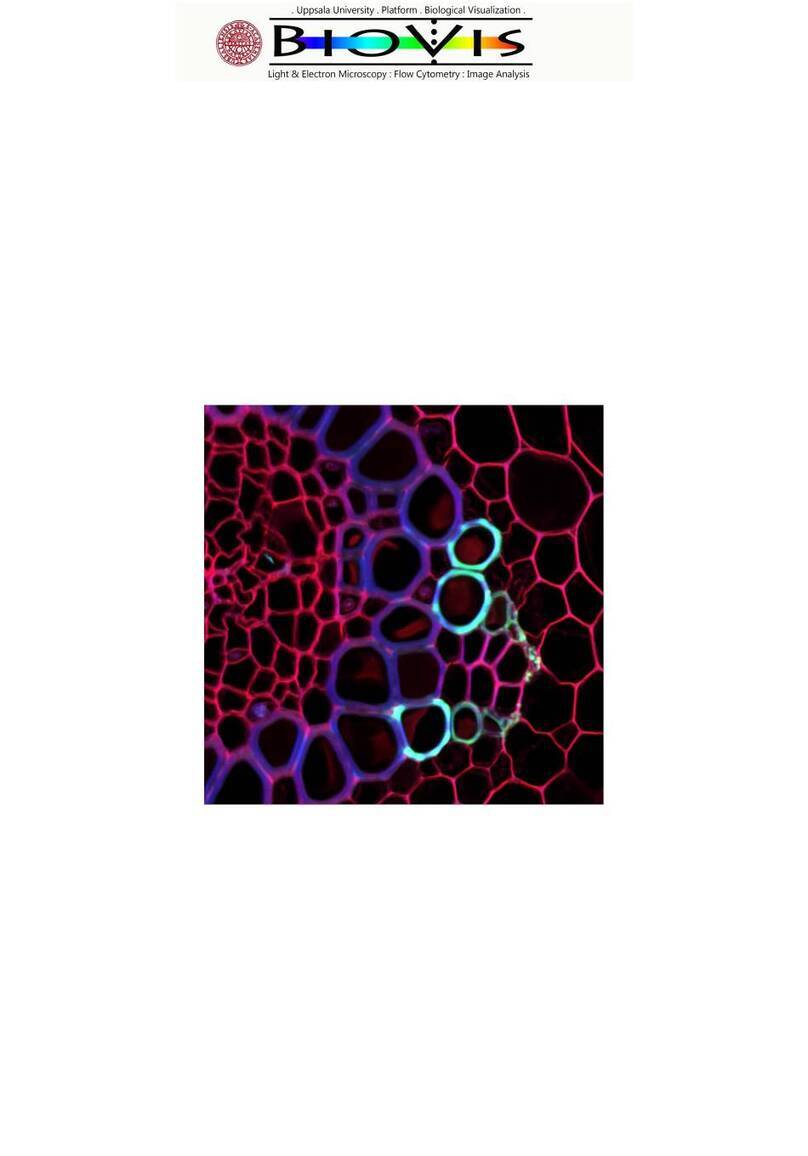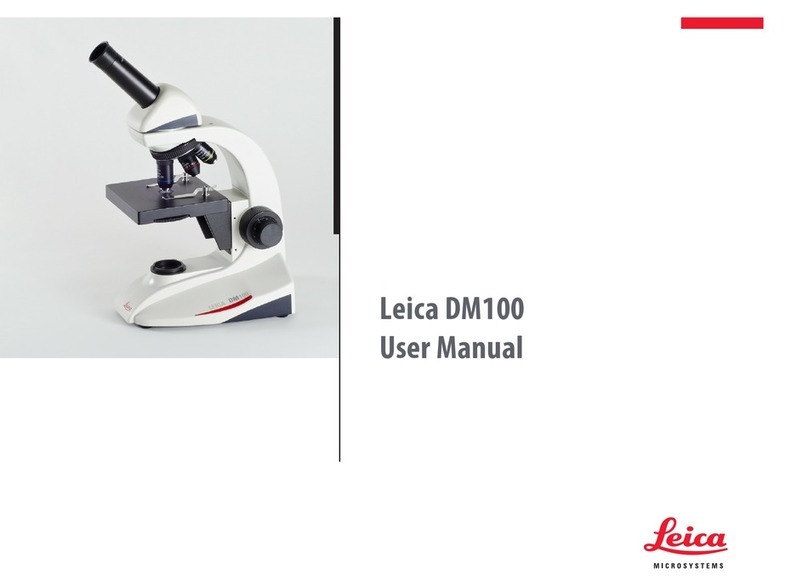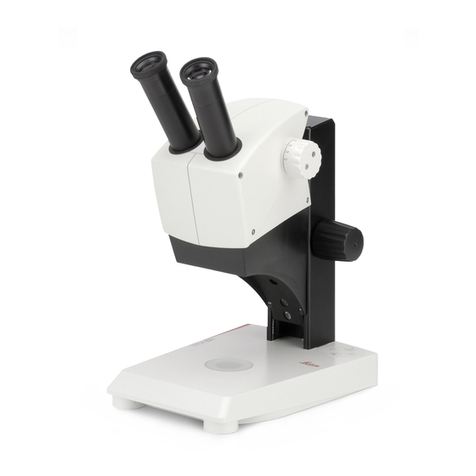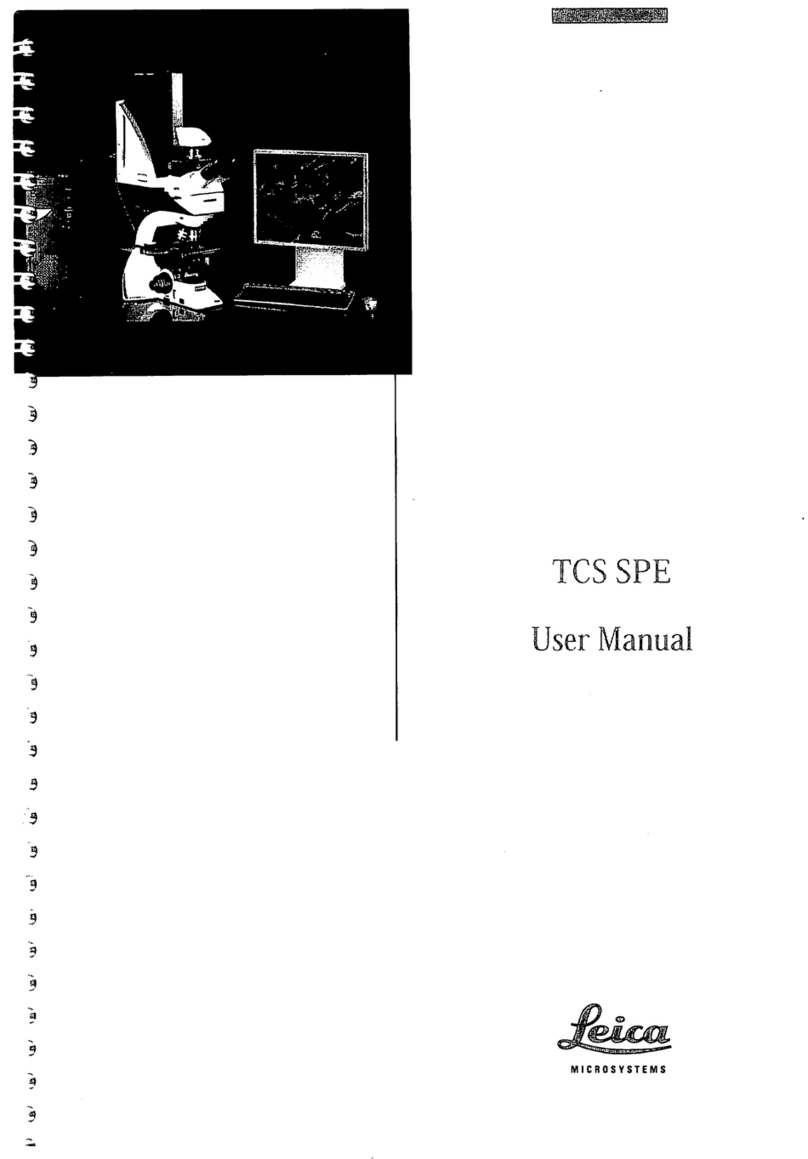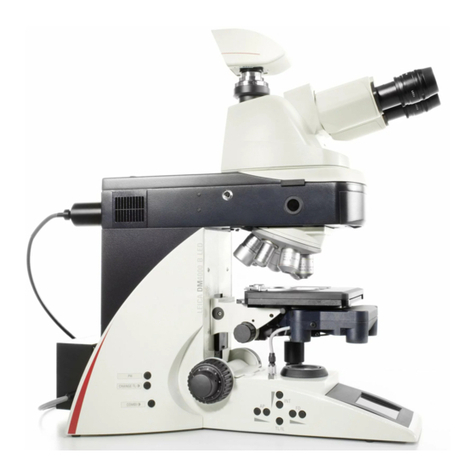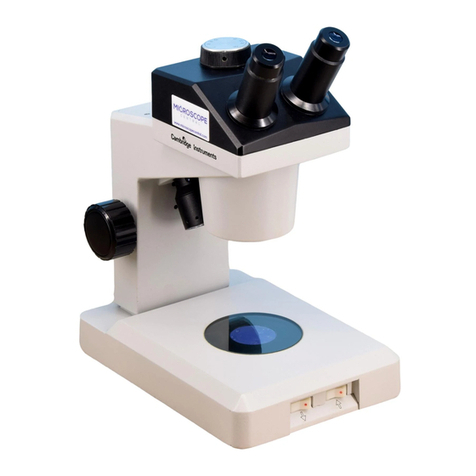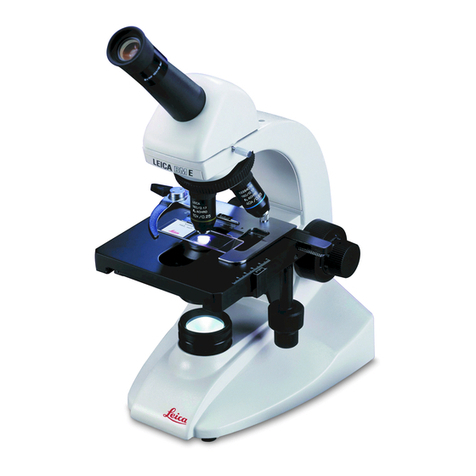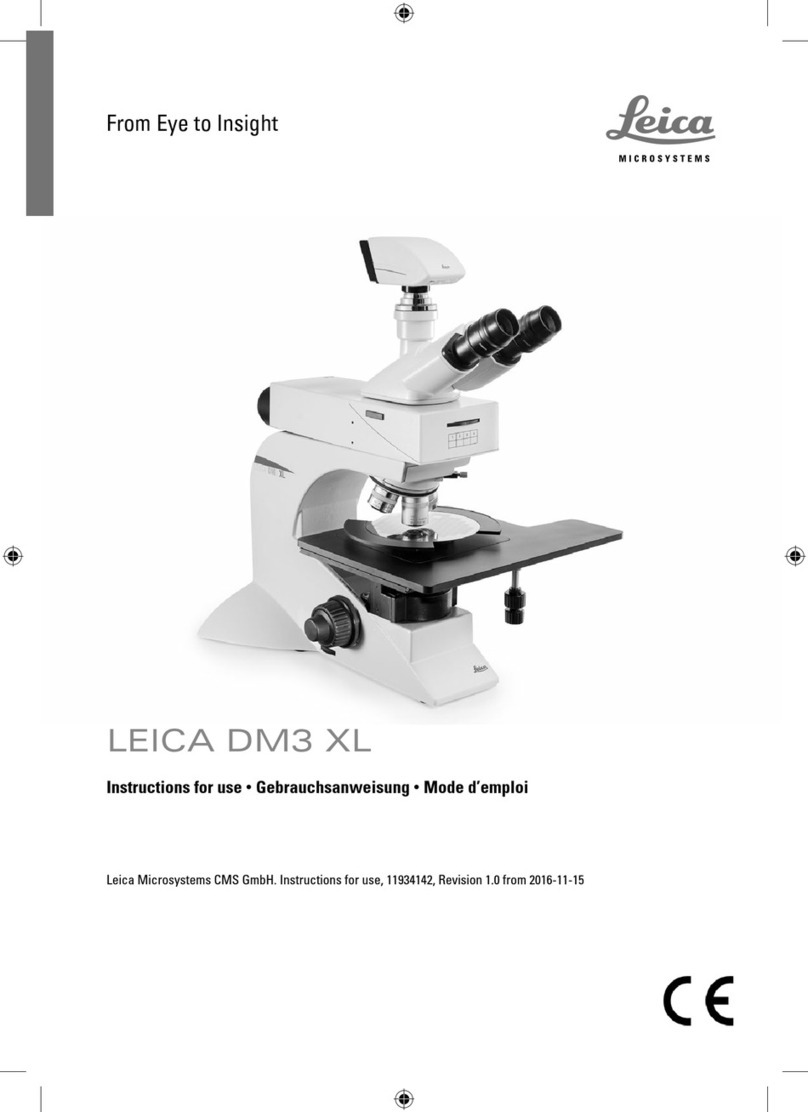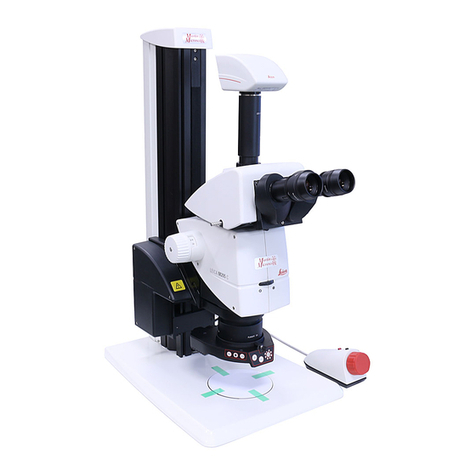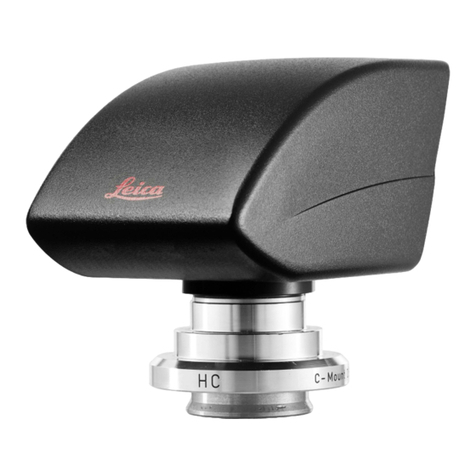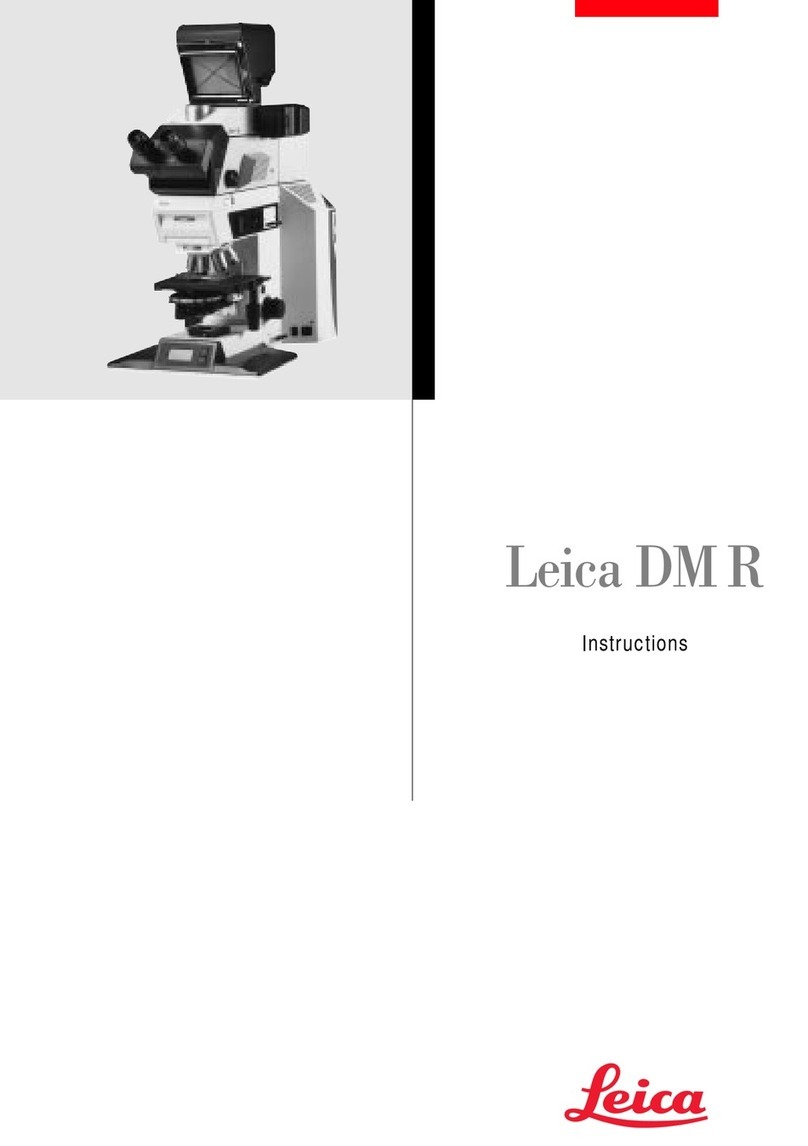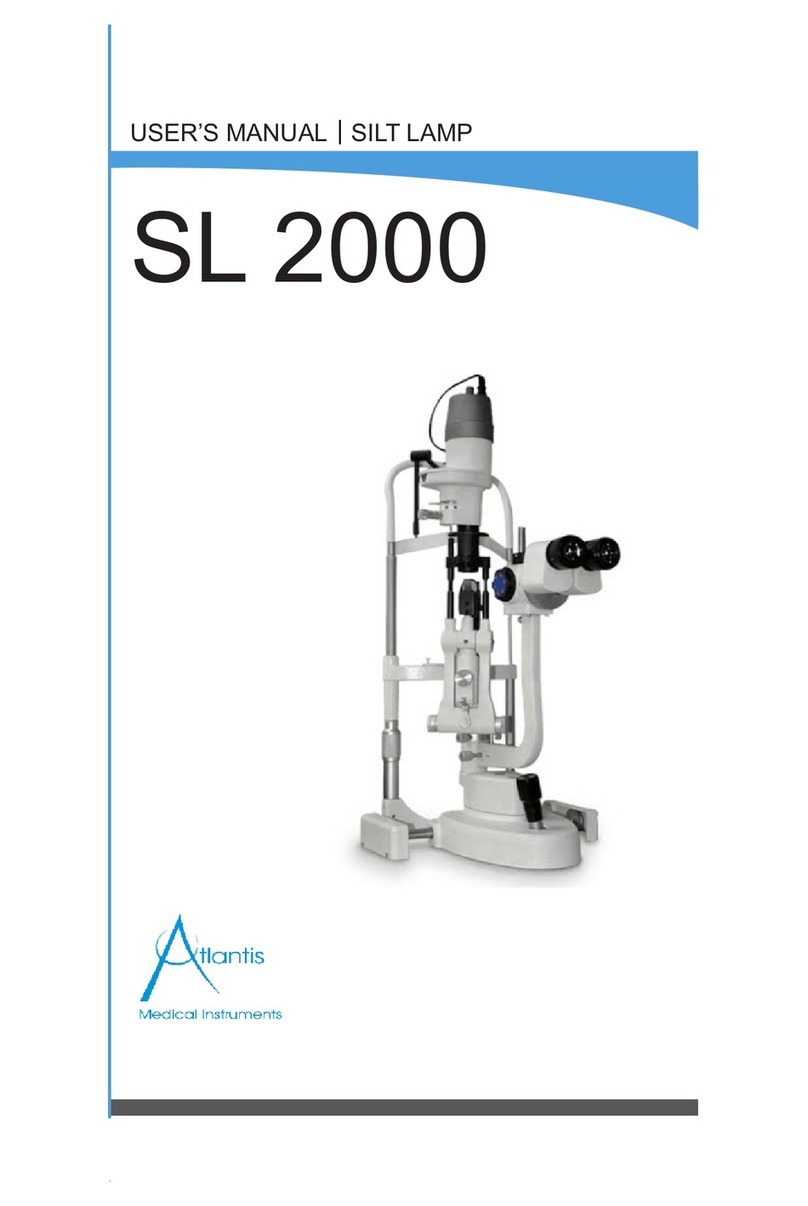8
2. Intended Purpose of the Microscope
2. Intended Purpose of the Microscope
The microscopes of the Leica DMI series cov-
ered in this manual are designed for biological
routine and research applications. This includes
the examination of samples taken from the hu-
man body with a view to providing information
on physiological or pathological states or con-
genital abnormalities, or to determining the
safety and compatibility with potential recipi-
ents, or to monitoring therapeutic measures.
The Leica DMI series is a further development of
Leica’s proven inverted research microscopes.-
It is designed for cellular and tissue examina-
tion, micromanipulation and microinjection
techniques, microdissection and confocal
microscopy. The Leica DMI series is suitable for
universal deployment. All contrast methods
such as dark field, bright field, phase contrast,
DIC, fluorescence (not DMI 3000) and modula-
tion contrast are integral to the microscope and
can be adapted or changed quickly and easily.
Variable illumination and imaging beam paths,
as well as HCS optics, modular accessories and
a comprehensive range of peripherals comple-
ment the Leica Microsystems inverted research
stand.
The above-named microscope complies with
the Council Directive 98/79/EEC concerning in
vitro diagnostics. They also conform to the
Council Directives 73/23/EEC concerning electri-
cal apparatus and 89/336/EEC concerning elec-
tromagnetic compatibility for use in an industrial
environment.
Caution!
The manufacturer assumes no liability for
damage caused by, or any risks arising from
using the microscopes for other purposes
than those for which they are intended or
not using them within the specifications of
Leica Microsystems Wetzlar GmbH.
In such cases the declaration of conformity
shall cease to be valid.
Caution!
This (IVD) device is not intended for use in
the patient environment defined by DIN VDE
0100-710. Neither is it intended for combin-
ing with medical instruments according to
EN 60601-1. If a microscope is electrically
connected to a medical instrument accord-
ing to EN 60601-1, the requirements defined
in EN 60601-1-1 shall apply.
